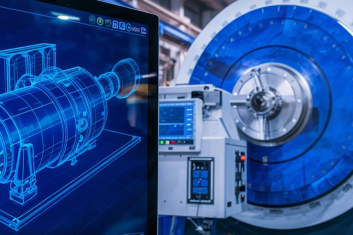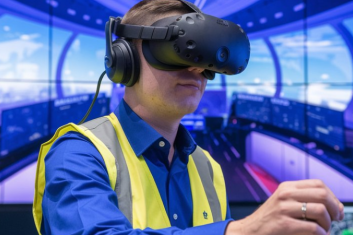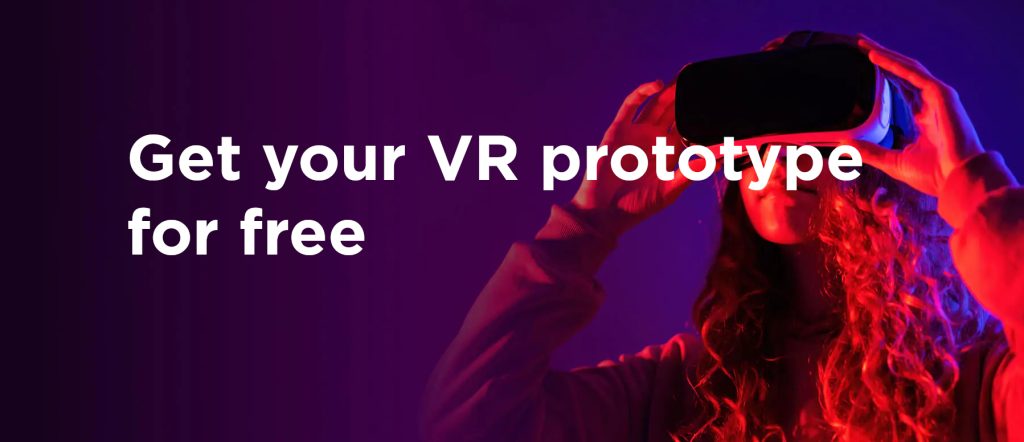Top 10 Industries Impacted by Virtual Reality Technologies
In 1938, French director Antonin Artaud introduced the concept of Virtual Reality in his work ‘The Theater and its Double.’ Of course, at that time, he could not have imagined that in the future there would be VR headsets and glasses that would allow a person to be fully immersed in a pre-modeled artificial space.
Today, VR technologies are gaining popularity and penetrating almost every aspect of people’s lives. They work as tools for business expansion, allow you to travel without leaving home, gain new knowledge, have fun and even conduct complex scientific experiments.
In this article, we take a look at 10 industries that have been significantly impacted by Virtual Reality, demonstrating its transformative power in sectors ranging from healthcare and education to real estate and tourism.
Top 10 Industries Impacted by Virtual Reality Technologies
The Virtual Reality industry is experiencing a period of significant expansion. Market projections anticipate the global VR market to surpass $22 billion by 2025, a considerable increase from under $12 billion in 2022. This growth is attributable to the active adoption of VR technology across various industries.
1. Gaming
Gaming may be the first use that pops into your head with VR, and there’s a good explanation for that. The immersive experience provided by VR has taken gaming to a whole new level. VR games transport players to entirely new realities within virtual spaces, offering a level of realism and interactivity that traditional games simply can’t achieve. This allows people to feel as if they are truly inside the world of the game, not just observing it from the outside.
VR’s impact on gaming goes beyond mere immersion. It has also opened up new revenue streams for game developers. VR games require specialized hardware, such as VR headsets, which are sold separately from game consoles. This means that game developers can sell their games to a wider audience, not just console owners. In addition, VR games can be sold at a higher price than traditional games, providing development companies with more revenue.
2. Education and training
Virtual Reality is revolutionizing education by creating immersive and interactive learning experiences that go beyond traditional methods. Thanks to VR, a student can not only read information about certain events, experiments and phenomena, but also get to any point of the globe, observe the course of history and conduct a complex chemical experiment.
Participants in this kind of education can be physically located in different cities or even countries, but still interact with each other in the scientific sphere, share experience and develop relevant skills together.
By using VR technology, teachers can now provide students with unprecedented opportunities to explore, experiment, and engage with educational content in ways that were previously unimaginable.
- Virtual excursions: Students can explore historical landmarks, travel to different ecosystems, or even go to space without leaving the classroom. This promotes deeper understanding and ignites curiosity.
- Hands-on science labs: Students can conduct virtual experiments, dissect 3D frog models, or study the human body in detail. VR provides a safe and accessible lab experience.
- Interactive language learning: Learners in VR engage in natural conversations with native speakers, practice real-world cultural scenarios, and immerse themselves in diverse environments, leading to a deeper understanding and faster language mastery.
One example we can mention is a successful project developed by HQSoftware. Our team built VR training simulations for a job training company. These VR experiences help people learn new skills for careers in engineering, mechanics, and cooking. The training is engaging (84%), effective (67% knowledge retention), and feels realistic, making it a great way to prepare for a new job.
Want to create an AR/VR solution in your industry? We’re ready to help!HQSoftware has a team of skilled professionals ready to tackle the project. Ask me!
Anna Halias
Business Development Manager
3. Healthcare
Virtual Reality breaks down barriers to learning in complex medical fields. Unlike traditional methods, VR allows students to not only visualize intricate processes but also explore them in stunning 360 degrees. This virtual world lets them examine the body’s smallest details across various disciplines such as anatomy, neurology, ophthalmology, etc. Consequently, VR fosters a deeper understanding of the material and facilitates information retention.
Virtual Reality makes it possible to simulate the course of a surgical procedure, to practice the technique on three-dimensional models, to consider emergency situations that may occur during the procedure, and to practice to the point of being able to perform certain actions automatically. This has already been proven to significantly increase the safety of the intervention.
HQSoftware has a broad record of developing VR apps for the healthcare industry. One is a VR platform for medical training with multi-user access and immersive VR environments.
This innovative solution offers healthcare organizations a highly detailed and flexible environment for rapid simulation development. The platform boasts multi-user functionality, diverse VR environments, and personalized virtual rooms for enhanced collaboration. Studies have shown this approach to be highly effective, with a 63% increase in knowledge retention and a 72% boost in user engagement.
4. Automotive industry
In 2019, Virtual Reality in the automotive industry was valued at $759.3 million, with an expected growth of $14,727.9 million by 2027. From test drives to training simulations, VR is rapidly transforming the automotive landscape.
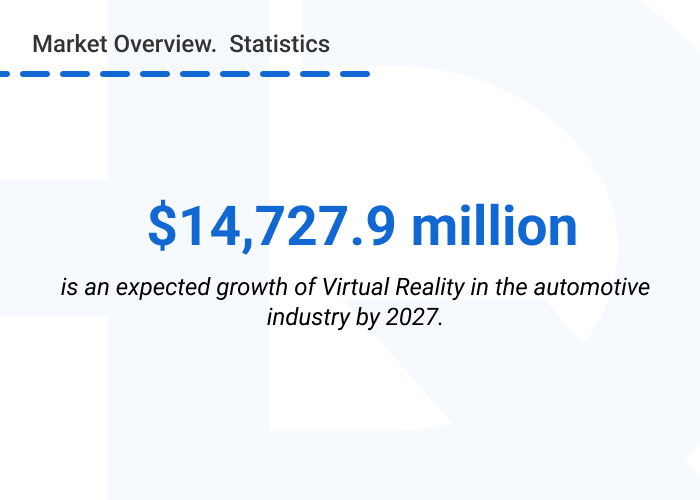
Using VR/AR, automotive designers and engineers are able to create and test new vehicle concepts and models in a virtual environment before they even hit the production lines. This speeds up the development process, reduces costs and improves the quality of the final product.
Even before the pandemic, companies like Honda, BMW, and Jaguar Land Rover (JLR) were leveraging VR for design and engineering reviews. This technology offered a compelling alternative to traditional clay models, allowing for faster iteration and collaboration.
VR is also revolutionizing vehicle training and maintenance processes. Virtual Reality simulators allow mechanics and service technicians to learn and train on virtual vehicle models, which improves service quality and reduces the risk of repair and maintenance errors.
A few years ago, HQSoftware partnered with a global auto giant that boasts its own driving school. Together, they developed a cutting-edge VR training app. This innovative tool simulates the visual distortions experienced by drunk drivers, including blurred vision and delayed reactions. The app overlays these effects in real-time onto the user’s view within virtual reality goggles.
5. Retail
Of course, Virtual Reality could not bypass such a large and profitable sphere of activity as retail. VR can help provide customers with a memorable experience and maximize the comfort of interacting with your brand.
For example, instead of creating a catalog with lots of photos and long descriptions of products, you can allow users to literally look at the products as if they were seeing it in person. Thus, interaction with your brand will be more interesting and productive, which is clearly to your company’s advantage. As a result, you get loyal customers, increased profits and a competitive advantage.
With the help of VR headsets, modern technology allows businesses to analyze customer behavior within their stores, providing valuable insights into what attracts and engages shoppers. This data can then be used to optimize merchandising strategies, leading to a more customer-centric shopping experience.
HQSoftware has partnered with Reactive Reality to create a mobile app with a virtual fitting room. This AR tool allows shoppers to virtually try on clothes before buying, reducing returns and increasing sales. The app was so successful that it helped Reactive Reality raise funding and expand their team. By personalizing the shopping experience, this innovative solution benefits both retailers and consumers.
6. Tourism
Virtual Reality in tourism is one of the newest and most promising tools for demonstrating tourist destinations, resorts and hotels. The effect of full immersion, high image quality, wide opportunities to demonstrate tourist sites and attractions — all this makes VR a powerful marketing tool today.
Nowadays travel companies are actively promoting their services with the help of VR technologies, which can present the most popular cities with all the attractions in the most favorable light. A modern traveler need not be limited to the usual routes but can look into the farthest corners of the globe and feel like a real explorer. Guides are being replaced by Artificial Intelligence, which will tell you in great detail about all the features of the chosen place.
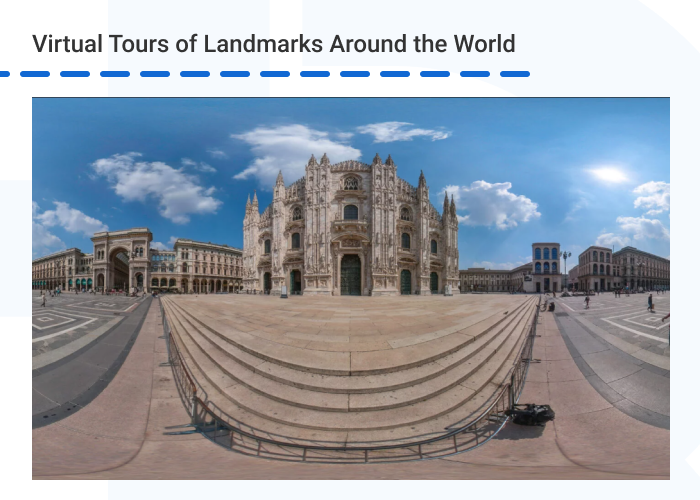
Virtual travel is a new way to “visit” any corner of the planet and beyond. This option is especially relevant to people who, for one reason or another, cannot travel in the real world. With VR, they can embark on a guided tour of the bustling streets of Tokyo or the ancient ruins of Rome, all from the comfort of their couch. They can even take a Harry Potter tour of Edinburgh from anywhere in the world!
7. Real estate
According to a report by Goldman Sachs, Virtual and Augmented Reality technologies in real estate are expected to be a $2.6 billion market by 2025. This trend demonstrates the growing interest in using AR/VR to enhance property visualization and improve the overall buying experience for customers.
The main advantage of using Virtual Reality is the ability to view the property, design, layout and other aspects of the real estate remotely or while it is still under construction. No video or photos can give such an effect.
Normally, potential clients have to come to the object, study a lot of not very informative documentation and try to imagine how it will all be realized in life. Now this task becomes much easier. An interactive, 360-degree view of objects with high-resolution rendering allows you to immediately see how housing or commercial real estate will look after all construction, repair and restoration work is completed.
How do modern businesses use AR to increase their revenues and outperform their industry competitors?
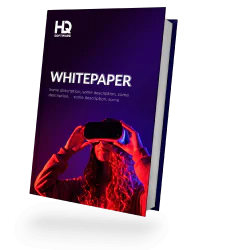
8. Interior design
For interior design studios, VR has become useful when demonstrating apartment projects, as it is one of the most informative and visual ways to evaluate the design. It allows clients to see the interior of an apartment before it is realized.
The advent of VR technologies has made it easier for companies to discuss the project with the customer and make changes at the planning stage. The usual layout of an apartment design project does not give a three-dimensional view of the room, its area, height and width. Virtual Reality allows you to immerse yourself in the interior of the apartment, to see its design and furnishings as if they were real. With the help of VR, it is possible to show both ready-made design options to choose from and an individual project developed for the customer.
9. Entertainment industry
The entertainment industry is harnessing VR to transport viewers directly into the virtual world. Imagine attending a red carpet premiere with your favorite celebrities or having a virtual chat with the cast of The Jungle Book. Disney Movies VR makes it possible.
VR breaks down the barriers between screen and story, allowing you to experience entertainment in a whole new way. It’s like stepping off your couch and into the heart of the action!
Another good example is Hammerhead VR, which used Virtual Reality technology to create an experience from the movie Honey, I Shrunk the Kids. The user puts on VR glasses and finds themselves in an ordinary refrigerator. The size of the person is reduced to the size of a walnut.
The journey begins at the top shelf and allows the user to whiz through all the shelves, bypassing the various foods that are stored in the refrigerator. The reaction of users was predictable—everyone was absolutely delighted and enjoyed the Virtual Reality environment.
10. Marketing
By harnessing the power of VR and AR, marketing takes a giant leap forward. This doesn’t just create amazing experiences for consumers; it’s a game-changer for brands seeking to stand out in a crowded market. Research backs this up: studies show a whopping 90% increase in purchase intent among consumers who participated in a VR experience.
HQSoftware helped a real estate marketing agency in Norway with a creative solution for showcasing future developments. They built an AR mobile app that overlays 3D models of planned buildings onto real-world construction sites.
Imagine pointing your phone’s camera at a vacant lot and seeing a realistic virtual skyscraper appear in its place. Users can explore these 3D models from afar to get a sense of scale, or even switch to AR mode and see the building at life-size, as if it were already constructed. This innovative approach lets potential investors and buyers visualize the future potential of a property, leading to a significant 42% increase in investment for the agency.
What Programming Languages Are Used for VR?
Choosing a programming language is an important step in the development of Virtual Reality applications and programs. While there is no single language specifically designed for VR development, several existing languages are commonly used for this purpose.
- C# is one of the most popular programming languages and can be used to develop VR applications on Unity, which is one of the leading Virtual Reality development platforms. Unity provides a wide range of possibilities for creating various VR apps, including games, training simulators, virtual tours and many more.
- C++ is another popular choice among VR developers due to its performance and low-level control over hardware resources. Game engines like Unreal Engine and Unity support C++ programming.
- Python is known for its simplicity and readability, making it a great choice for novice developers who are just getting familiar with the world of Virtual Reality. Python also has many libraries and tools that make it easy to develop VR applications. Its simplicity and versatility make it a suitable choice for prototyping and scripting VR apps.
- JavaScript, particularly in conjunction with WebVR and WebGL, is increasingly being used for developing web-based Virtual Reality experiences. These technologies allow users to access virtual worlds and virtual spaces directly through their web browsers, making VR more accessible and platform-independent.
Other programming languages like Java, Swift, and Rust are also being used in various VR projects, although their adoption is not as widespread as C++, C#, JavaScript, and Python.
It’s important to note that VR development often involves using game engines, physics engines, and other specialized tools and frameworks in addition to programming languages. The choice of language largely depends on the specific requirements of the project, the development team’s expertise, and the target platform (desktop, mobile, web, or standalone VR headsets).
How to Create a Custom VR App
Creating a custom Virtual Reality app involves a thorough process that encompasses several key stages. Whether you’re building a fully immersive, semi-immersive, or non-immersive VR experience, the development journey at HQSoftware remains largely consistent.
- The first step is business consulting and analysis. This involves determining the project scope, selecting the appropriate game engine (such as Unity or Unreal Engine) and hardware, and creating a roadmap for the development process. At HQSoftware, we offer consulting services to guide you through the best development options according to your needs.
- Next comes architecture design, where the concept of the solution is established, and the overall architecture is developed. This lays the foundation for the subsequent stages.
- The third stage is designing the VR experience itself. This involves exploring each scene, creating highly detailed 3D models and immersive visual assets, and developing interactions for all scenes within the virtual environment. HQSoftware specializes in building custom VR solutions from scratch, including 3D modeling, sound effects, and detailed scene interactions.
- With the design in place, the actual Virtual Reality app development can begin. This includes building logical modules and basic features, adding sound acoustics, and creating comprehensive documentation.
- Once the core app is developed, it’s time for quality assurance. This involves conducting unit and manual tests, documenting the results, validating compatibility with hardware, and ensuring optimal image and sound quality.
- Depending on the project requirements, additional features may be added, such as head-, eye-, and motion-tracking technologies, computer vision, and the integration of artificial intelligence and machine learning models. The HQSoftware team can enhance and extend the functionality of your VR solution with these advanced technologies.
- After the development phase, the app may need to be integrated with other software services, such as content management systems (CMS), customer relationship management (CRM) systems, or electronic health records (EHR) systems. HQSoftware offers integration services to seamlessly connect your VR solution with other important software services.
- Finally, training is provided to ensure users can effectively utilize the custom VR app, often accompanied by detailed tutorials.
The cost of VR development can vary significantly based on factors such as the app type, required technologies, visual elements, team expertise, project duration, and hardware requirements.
Final Thoughts
If you are planning to develop a VR application, feel free to contact us. Our VR team consists of experienced app developers who have already participated in numerous VR projects and confirmed their competence with many certificates.
During the project creation process, our engineers control all Virtual Reality app development processes to ensure the quality of all results and smooth operation, so we are confident in the high quality and reliability of your solution.

HQSoftware Founder
Having founded the company in 2001, uses his broad knowledge to drive the company forward. Ready to share his wisdom on software development and technology insights
Get Your VR Prototype For Free
Visit PageDid you like
the article?
Subscribe
for more!
Related Posts
View All
We are open to seeing your business needs and determining the best solution. Complete this form, and receive a free personalized proposal from your dedicated manager.

Sergei Vardomatski
Founder




